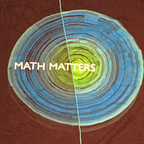Why do viral math problems suck?
Stop me if you’ve heard this one before.
Or,
Or even something as silly as this:
These are all math problems that have all gone viral. But they all suck. In fact, almost every viral math problem is bad, for several reasons.
But if the problems are so bad, why do they get so many likes and shares?
That’s because they are designed to rile people up. The problems are deceptively simple and made with the Dunning-Kruger effect in mind. Slap on a clickbait and misleading caption such as “Solve if you are a genius!” or “High IQ Intelligence Test”. Yet usually, the problems are merely pattern-finding and simple algebra.
That is the motivation for posting low-quality content. Now, why is the content that bad?
For one, there are multiple interpretations of the problem. Let’s look at the 1+4=5 problem again:
The answer I got was 96, with the following reasoning:
Yet, others claim that the answer is 40, with this line of reasoning:
The difference? The latter assumes that 8+11 follows immediately after 3+6. However, as MindYourDecisions points out here, if we include those lines, we arrive at the same answer of 96.
One can also get an answer of 52 with this logic:
And these are not the only possible ways of reasoning. This then begs the question: which reasoning is more valid? Who is right, and who is wrong?
And if one is feeling feisty, who is smart and who is stupid?
The ambiguous nature of the problem causes people to tell others that they are wrong. But what defines a wrong answer here?
There is no definition, it’s meaningless. In the end, this problem is a cheap way of grabbing likes and shares.
Let’s take a look at the second problem I mentioned, an exercise in spotting visual discrepancies:
I’m sure that you saw that in the third equation, there are two coconuts, and in the fourth, there is only one. But note that there are three bananas in the fourth equation: the second and third equations have four!
Don’t believe me? Zoom in on the picture and see for yourself.
Something like this feels obvious to some, but not to others. And it’s obvious that getting the correct answer does not make one a genius — instead, they kept their eyes peeled.
Let’s focus our attention on this last problem that I referenced earlier:
Ignoring the misleading percentage at the top of the image, this is simply a typical homework problem for elementary school students. It’s a problem that tests students’ memory of the order of operations. There is nothing special or unique about this problem — it’s just many numbers with symbols in between them. We can all agree that the problem is one-dimensional and boring.
Now, what does a good problem look like?
A good problem is and does the opposite. It unites people together in solving, not differentiates them based on their opinions. It has a clear and well-understood problem statement. It should be challenging, yet its solution must be easy to understand. Most importantly, it should be intriguing — who would want to do an unfun problem?
Usually, this is what contest math strives to do. Contest math problems spark collaborative discussions in AoPS threads. Some have succinct yet nontrivial (and fun!) problem statements. These characteristics excite me and I’ll ramble about them more in a future article.
However, not all good problems have to come from a math contest. Below are a few problems I adore (sorted in order of difficulty), with their respective sources mentioned.
- (Martin Gardner) Two boys on bicycles, 20 miles apart, began racing at each other. The instant they started, a fly on the handlebar of one bicycle started flying straight toward the other cyclist. As soon as it reached the other handle it turned and started back. The fly flew back and forth in this way, from handlebar to handlebar, until the two bicycles met.
If each bicycle had a constant speed of 10 miles an hour, and the fly flew at a constant speed of 15 miles an hour, how far did the fly fly? - (Source unknown, likely Gardner) A criminal has recently left a crime scene on a bicycle. You stumble upon these tracks:
Did the bicycle go left to right or right to left?
(Even though this isn’t a math question, it’s a great exercise in logical and out-of-the-box reasoning!)
- (Special case of The Princess and the Roses) A princess has two suitors, Alan and Bernard. She tells them that she has three piles of roses laid out on a table. They must take turns in handing her one rose or two roses from different piles, with Alan going first. The person who hands her the last rose wins her hand in marriage. Assuming both players play perfectly, describe the initial scenarios in which Alan wins.
- (MindYourDecisions) A large rectangle can be divided into smaller rectangles, each with an integer height or width (or possibly both). Prove that the large rectangle also has either integer height or integer width (or possibly both).
- (A. Liu) Put 77 chocolate bars into as few bags as possible such that you can give either 11 children 7 chocolate bars each or 7 children with 11 chocolate bars each.
I hope you found the post informative. Until next time!
-Elijah Liu
